Pochettino has silently made huge tactical changes in his Tottenham side recently. Pochettino was previously known for his use of the 4-2-3-1 & 3-4-3 system. But recently, he has changed his shape to the old-fashioned – yet still modern ‘4-3-1-2’, or, “4-4-2 Diamond” formation. In this analysis, we’ll discover what this new system means, and what Tottenham have to do in order to improve.
Demanding possession
Pochettino has always favored a patient, slow build up. His vision is about dominating the entire pitch, full-backs pressing incredibly high up, strikers dropping deep etc. His idea is to have the pitch covered by many players to create numerical advantages, this allows his side to dominate possession and press relentlessly.
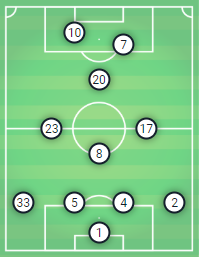
Against Manchester United, the Lilywhites had an impressive 61% possession. If we can forget (yes, I am a sore Spurs fan) about the scoreline for a minute please… Let’s talk about the positioning of Poch’s men.
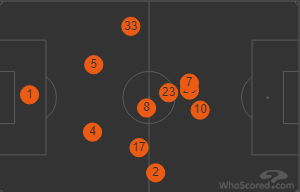
As you can see above, the central area’s are massively overloaded. The main component to this tactical style is the ‘Great Dane’, Christian Eriksen. The number 23 started the game as a left-centre mid. The corner of the ‘diamond’. The playmaker has a free-roam role and dictates possession, wherever the ball is, you’ll find Eriksen.
Winks is another key asset to this side. The deep-lying playmaker drops deep and connects the defence with the midfield, he is quite literally, the middle man. The linked article above by myself, touches up on his tactical role at Spurs.
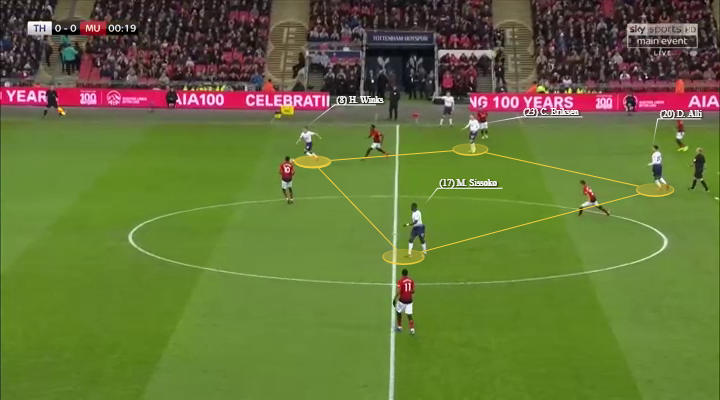
If we look how narrow the Spurs midfield is, it’s obvious to why Tottenham routinely dominate possession.
Eriksen and Sissoko are the corner-pieces of the narrow Diamond. Sissoko, a wide shuttler, is the widest midfielder, is only as wide as the center-circle. The idea of this is to overload the middle, which free’s up space out-wide for attacking fullbacks.
Poch is known for demanding his fullbacks to hug the byline and press high up, the midfield Diamond gives them space – simultaneously, the fullbacks stretch the pitch and allow the Diamond to dominate possession.
Ohh Moussa Sissoko!
The Frenchman has seen a renaissance in quality this season, a revival of what Newcastle fans onced loved. The player had performed poorly in his last season at Newcastle, and poorly in his last 2 seasons at Spurs. But this season, with Dier, Wanyama and Dembele all injured or seeking a move elsewhere, Sissoko has had the chance to get comfortable and work hard.
The Frenchman plays as a shuttling midfielder, not a ball-winner, but someone who makes lateral runs to cover for attacking full-backs, as seen with Tripper and Aurier.

Despite being the right center-mid, Sissoko covers ground for his attacking right full-back. If we go back to the first paragraph and look at the average position map, we will see that Spurs favor attacks through the right-flank or central areas. You will also see how close Sissoko is to Trippier. Sissoko’s job is to drop into the space left vacant by the right-back. This role doesn’t require strong technical ability or much talent, but a do-or-die attitude and physicality. Sissoko definitely has that.
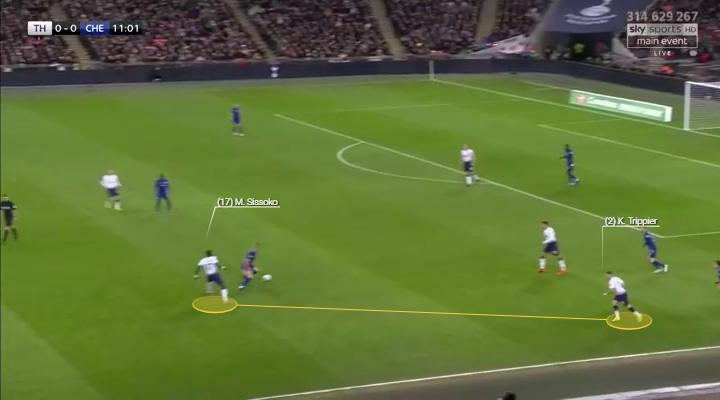
Despite not being the best on the ball, Sissoko still has some pretty good statistics to boast about.
Sissoko completes 4.7 dribbles per game, completing 65% of his attempted dribbles. Not bad for a player once labeled a “donkey” by some ‘fans’. He also has an 82.9% pass success rate, very impressive for a player intended to cover ground. These stats underline that just because he has a job based on athleticism, doesn’t mean he can’t contribute to Tottenham’s domination of the ball.
Pass the ball, Harry!
He scores 30 or 40 goals a season, and he can pass. What more can you ask for? Nothing, Kane has everything you can imagine to his game. His ability to drop deep and overload central areas is nothing short of phenomenal. His passing has also improved. He got bored of being a world-class striker, now he’s also a world-class playmaker…

Shown above his Harry Kane’s heatmap. As you can see, he covers almost every blade of the grass in the opposition’s half. I don’t think there is a striker in the world that has a package as complete as Kane has, tell me something he can’t do – besides taking a corner, Roy.
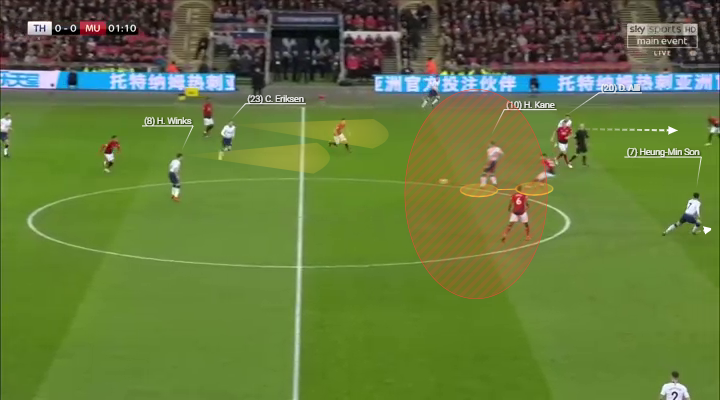
As we can see above, Kane has dropped very deep. Once Kane drops deep, Alli and Son make bursting runs in behind. This is because as Kane drops deep, he has also dragged forwards his marker and creates space to run in behind to. Kane has two very good playmakers facing him, Eriksen and Winks, who both have the ability to play a quick, killer ball. A passing sequence commonly used by Spurs after the last few seasons. But now with Son and Alli, rather than just Alli – Spurs are twice a lethal and have better pace in the counter-attack.
With 18 goals already this season, Kane is definitely challenging for the European Golden Boot. But as I mentioned above, he’s not just a finisher.
Let’s talk stats
Against Manchester United, Spurs should have scored more than a few goals vs Solskjaer’s men. I’ll back this up with stats, but it shows Spurs have to be more clinical in front of goal.
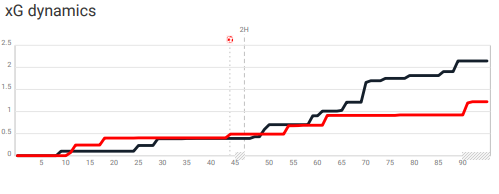
As we can see above, United statistically deserved their goal, no questions asked. But, Spurs needed to do more. 90 minutes of poor finishing and a lack of quality in decision making caused Tottenham to lose all 3 points.
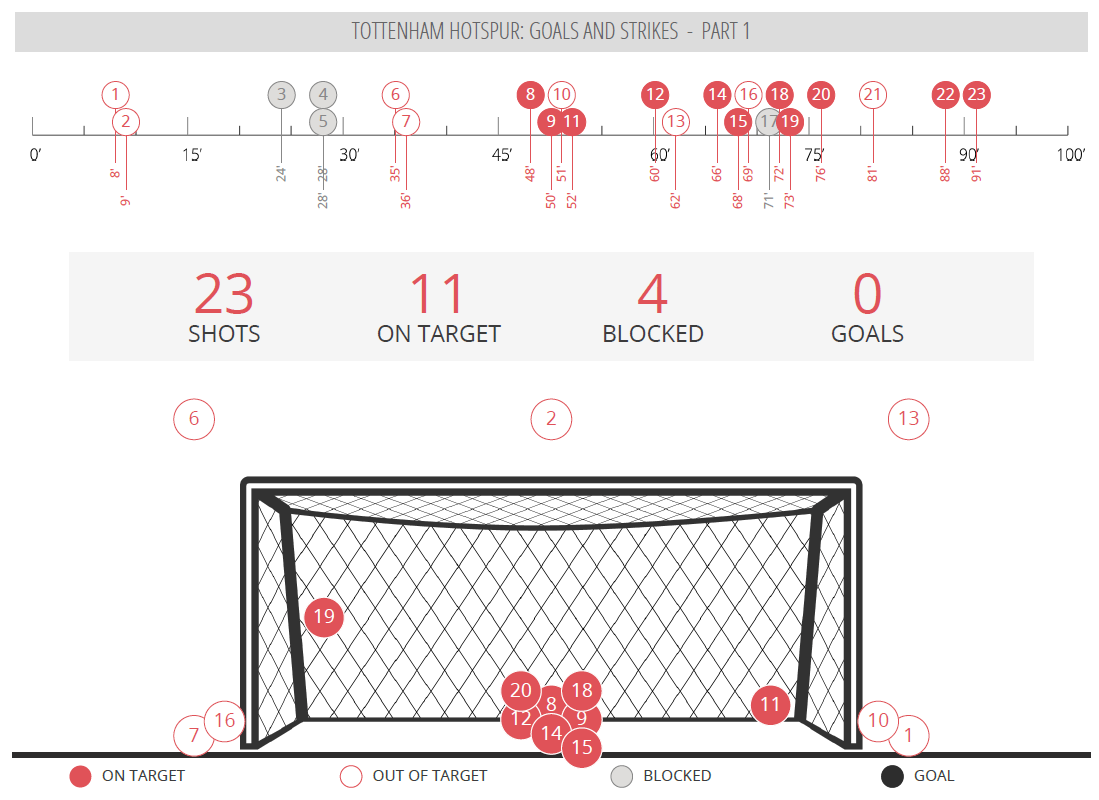
As we can see above, Tottenham’s finishing was terrible at best. Only two shots throughout the entire game (of 23 shots in total), where placed accurately in the corners, and even then, De Gea managed to stop them due to them not being acutely placed. Harry Kane was effectively non existent, one single shot on target, and straight at De Gea.
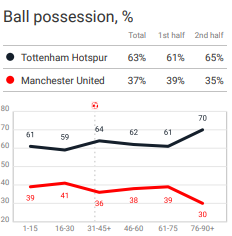
Above is the possession timeline vs United. As we can see Tottenham comfortably dominated the ball for the entire match, without any success.
Ole Gunnar Solskjær’s side where too comfortable defensively. This goes to say, dominating the ball doesn’t mean that you’re dominating the game, it’s far from that.
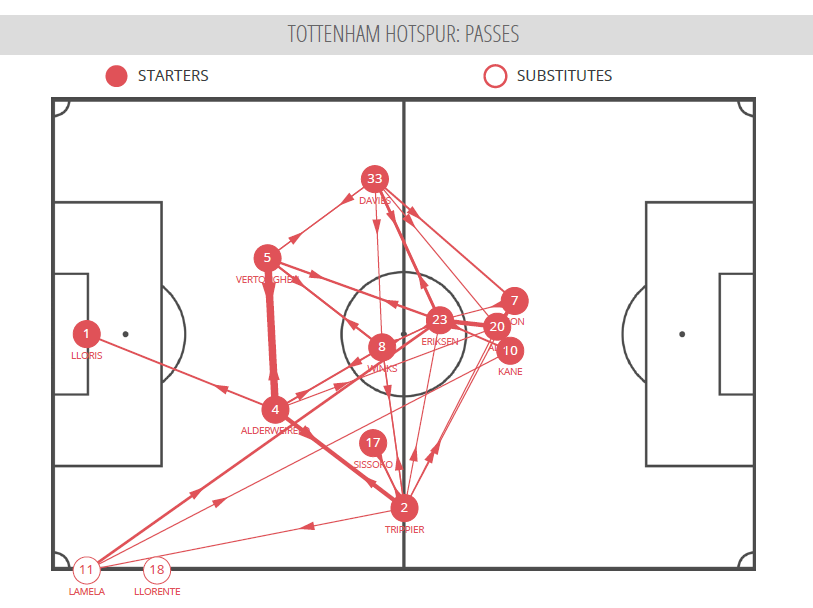
Above is the average positioning, and passing map vs United. It shows that despite Spurs had more of the ball, the Red Devils managed to keep Tottenham’s majority of play in Tottenham’s half. Despite the midfield diamond doing its job, keeping possession, the majority of passes as we can see, was throughout the back 4.
Son, Kane, and Alli were too deep. Son needed to do more to stretch the United backline, someone with his pace and ability needed to do more. Son made very little runs in behind, despite Kane dropping deep & creating space for him. Alli was moved to the left of the diamond after Sissoko came off. Shortly after Sissoko came off injured, and Alli had moved to LCM, the Reds quickly scored.
Is Lloris past it?
Hugo Lloris, a player who can save shots that seem unsavable, but also concedes ‘easy saves’. The 32-year-old has been Tottenham’s first choice keeper for what seems like forever, but fans are starting ask the question whether he should keep his position between the sticks.
The France and Tottenham captain concedes a goal every 0.91 games. Whilst this isn’t a bad stat at all, it also means he is likely to keep a clean sheet once in every 10 games.
Let’s look at more stats. I don’t want to be ‘that’ fan who calls for a player head after a few bad performances. The fact is, Lloris has his obvious weaknesses, let’s have a look at some.

As we can see as proven above, Lloris has a serious weak spot in that Left-bottom corner of his. And Manchester United knew this, I mean look at the positioning of the shots Hugo faced against the Reds below.
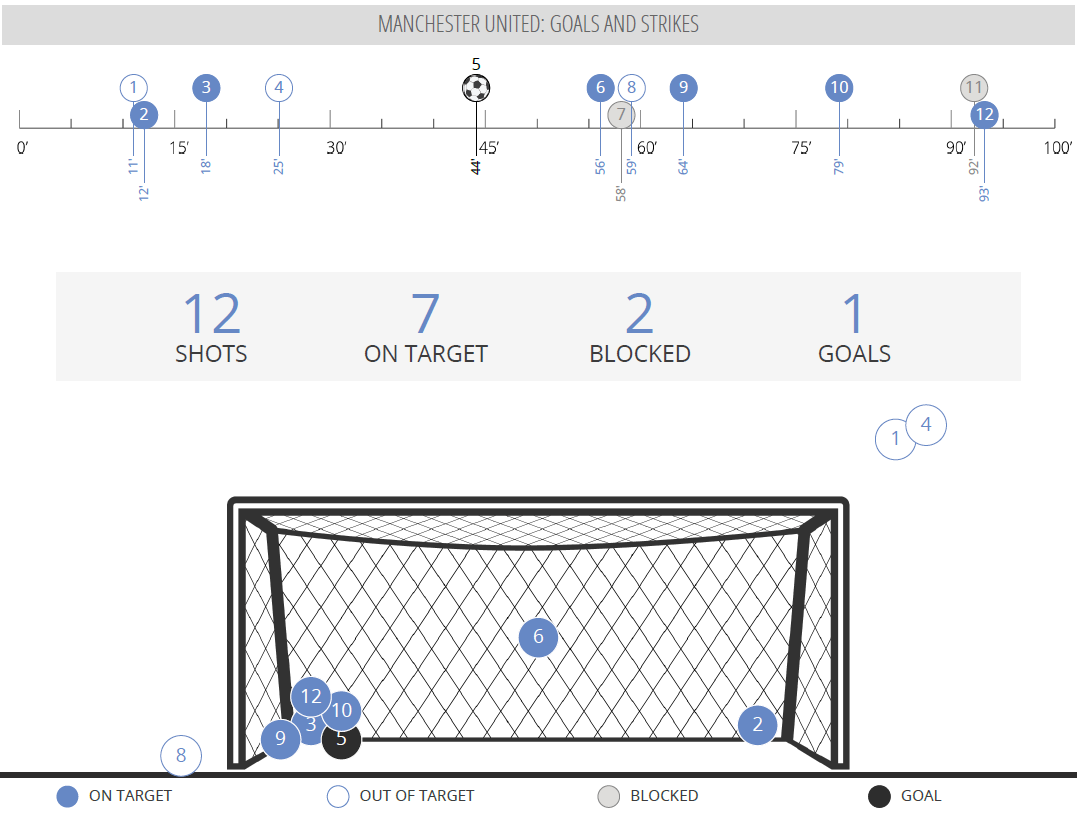
It’s obvious that teams are spotting this specific weakness. Lloris’ positioning during Rashford’s goal was questionable, really questionable.
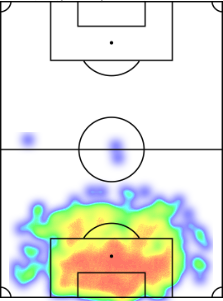
We can state the obvious and state that Lloris’ decision making can be rash, but more often than not, his sweeping ability is very, very good.
Lloris has always had a reputation of a very good sweeper keeper. Unfortunately, the media always forgets the moments throughout the year where Lloris has come to the rescue (back in the days of Kaboul…), but love to point out the odd mistake a season. It’s an unfortunate reality for goalkeepers, it truly is the loneliest job in football.
Defensive structure & high-press
Spurs were presented with a real test against Chelsea in the Carabao Cup Semi-Final in the first leg. Chelsea, a club who have also seen a tactical revolution themselves with Sarri. Though, it has been a much better-documented change in playing style, in comparison to Tottenham’s changes. You could argue that either side has changed more than the other. The fact is, there are real tactical & non-tactical changes happening to every club situated in London.

Spurs lined up in their 4-4-2 Diamond, Chelsea played their typical 4-1-2-3, playing classical Sarriball. Chelsea have an issue however, they have no striker that who could play an adequate role in the build-up phase.

As we can see, Spurs are much deeper – a sign of their intent to disrupt Chelsea by dropping off and occupying space. It also emphasizes Spurs’ attacking tactics, Kane is quite deep, whereas Alli and Son look to run in behind the very high line of Chelsea.
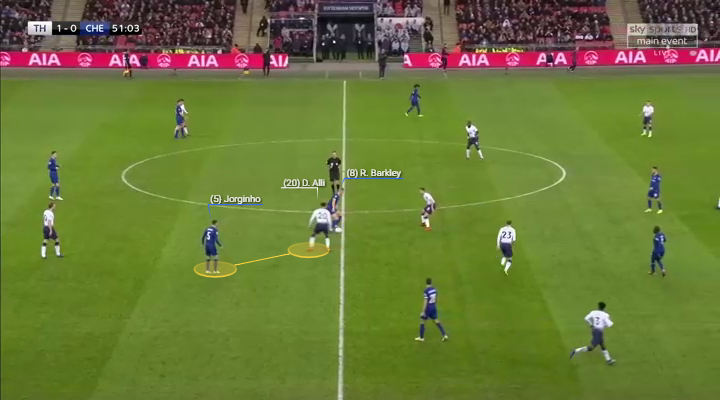
Dele successfully ‘cover-shadowing’ Jorginho, forcing Barkley to hesitate and lose possession.
Chelsea’s Jorginho was heavily marked by Alli, this man-marking rendered the West Londoners build-up ineffective. This seems to be a serious issue for Sarri. Every big game, Jorginho has been marked out of the game, he must adapt. This “cover-shadowing” by Alli is something he excels at. Dele played as a deep-lying playmaker whilst at MK Dons in which he mastered the role, he showed his class in this role in a 7-0 thrashing of Tranmere Rovers recently.
Dele’s ability to play in multiple strains of midfielder, or attacking-midfield is hugely important to Tottenham as he can offer the Lilywhites different options defensively and in attacking build-up play. Such as a deep-lying playmaker, a central-winger (Mezzala), Shadow Striker, or an advanced playmaker.
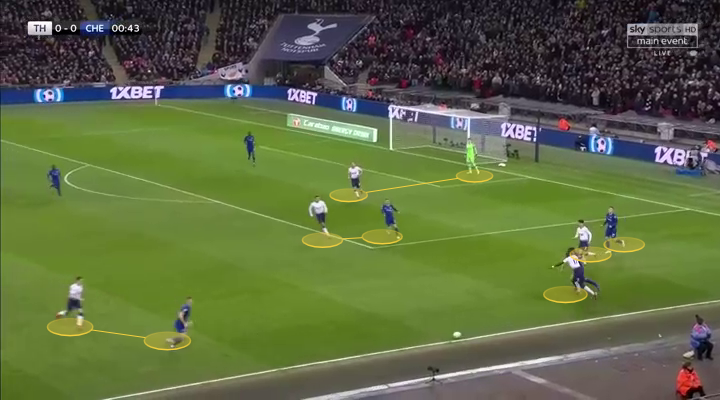
As seen above, Mauricio Pochettino prefers a man-orientated pressing scheme. These means he likes his players to heavily press individuals rather than space, or pressing multiple players upon the ball. In order to do this, Pochettino must ensure that his side is numerically balanced in each line of play (i.e Defenders, midfielders, attackers). The 4-4-2 diamond formation does this well and is versatile in the press. It allows 3 narrow players to press a back 4, this essentially means 3 players are pressing & man marking 2 center halves. This often forces teams to go long, after this, Spurs have the ability to regain possession & build out through the back, forcing the opposition to press them, for Spurs to then play around the press.
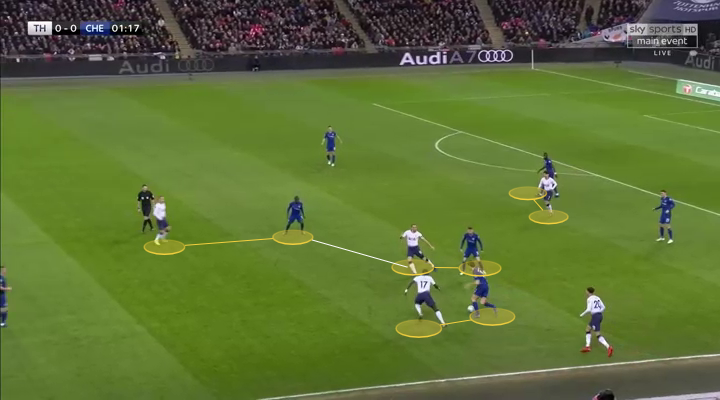
Above we see another element to Spurs’ press. I’ve often used the phrase ‘cover-shadowing’, but not really explained what it means. Cover-shadowing is used when a team cannot effectively match their opposition numerically. As we can see, Kane is marking Jorginho and blocking the pass to Kante. What Kane is doing to Kante is what we call cover-shadowing, blocking the passing lane, usually due to a overload on the pressing side. This allows the pressing team to cut off options to pass whilst not submitting any more numbers in the press as they have different phases to their defensive setup, at least, Spurs do.
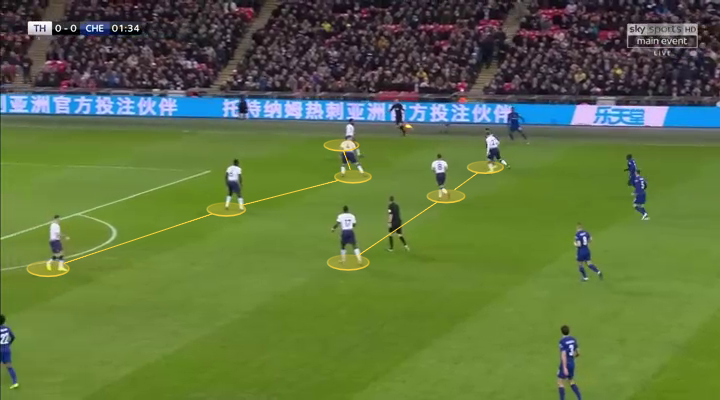
Once the oppositional team finally brings back Pochettino’s men deep into their own half, they operate with a narrow low-block, as seen above. Moussa Sissoko is the widest player in the narrow diamond. Alli, Kane and Son are just out of the frame, but are tracking back.
The trident of Kane, Alli and Son cover-shadow passes going backward to not allow any passes to the Chelsea back four. Because of this, Chelsea found it harder to transition as they couldn’t move the ball vertically with the back four.
The midfield 3 will drop off and block off the channels by dropping narrow and deeper, this allows Tottenham to control the game without being on the ball as Chelsea were confined to a small portion of the pitch.
How to beat Spurs? Just switch the ball man!
Tottenham’s strengths are ironically, also their weaknesses. Their desire to defend so narrowly leaves the option to switch the ball long & diagonally.
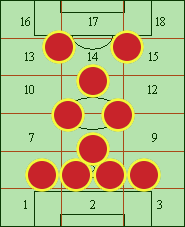
As we can see, Tottenham have made it near impossible to play through centrally. With many teams now playing with inverted-wingers, inverted-fullbacks and other funky hipster strains of players, it makes sense for Pochettino to do this. But teams like Man Utd, Man City, Crystal Palace and others all excel in the wide spaces.
Tripper and Davies are fairly poor fullbacks if we look at them from a neutral point of view. They may have a few great games a season, but more often than not, they’re the weak link for Tottenham. Tripper, the right-back, has a habit of being out position – hence why Poch has deployed Sissoko to cover his tracks. But if the ‘Bury Beckham’ understood his positional role within the team, there would be no need for a defensive minded player, this extra attacking man could be that cutting edge Spurs need when playing the nitty-gritty teams who are hard to breakdown.
Davies is a consistent player but doesn’t have the pace or aggression to force a winger to have a bad game.
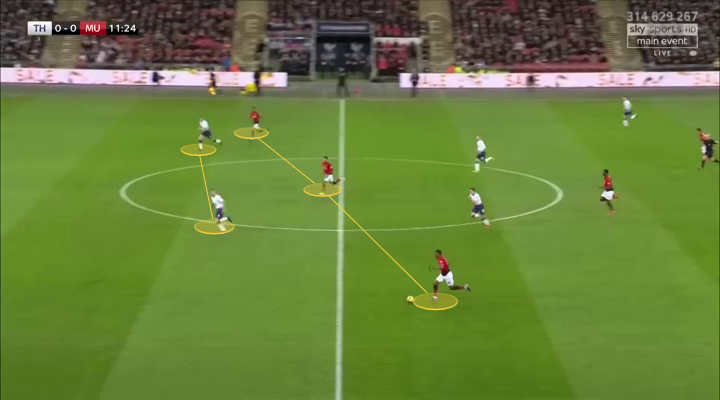
As we can see above, United are exploiting the space left out wide. Only Eriksen and Winks are covering their man, Winks is also chasing Martial which will leave even more space open. Man United did this many times and scored due to this.
In conclusion
Tottenham are a side who still have potential, despite the so-called “young team” having matured. These tactical changes where needed, this refreshment in shape, whilst still keeping the fundamentals there was a smart move by Pochettino. But there is still work to be made. Daniel Levy must look at a long term replacement for Moussa Dembele, check out my ‘stat pack’ on Dembele vs targets.
Fullbacks are still an issue since the departure of Kyle Walker. With Rose recovering and starting more in the left-back role, this is promising as he really adds a new gear to our game going forwards and defending. But theres still a need for a new right-back. Kyle Walker-Peters simply put, hasn’t developed much over the past few year and I think it’s time to dip into the old backpocket.
Despite not spending a penny over summer, Spurs have managed to sit in the same spot they’ve had for the last 2 years – something no one but Spurs fans could have imagined.
With the new stadium just about done, a stadium naming rights deal could add some weight to Mr Levy’s pocket, and maybe then, he will cough up some cash. But until then, who knows what’s next.
If you liked this analysis, give me a follow on twitter @Xanoriah, and maybe check out my other pieces on www.TotalFootballAnalysis.com
Leave a comment